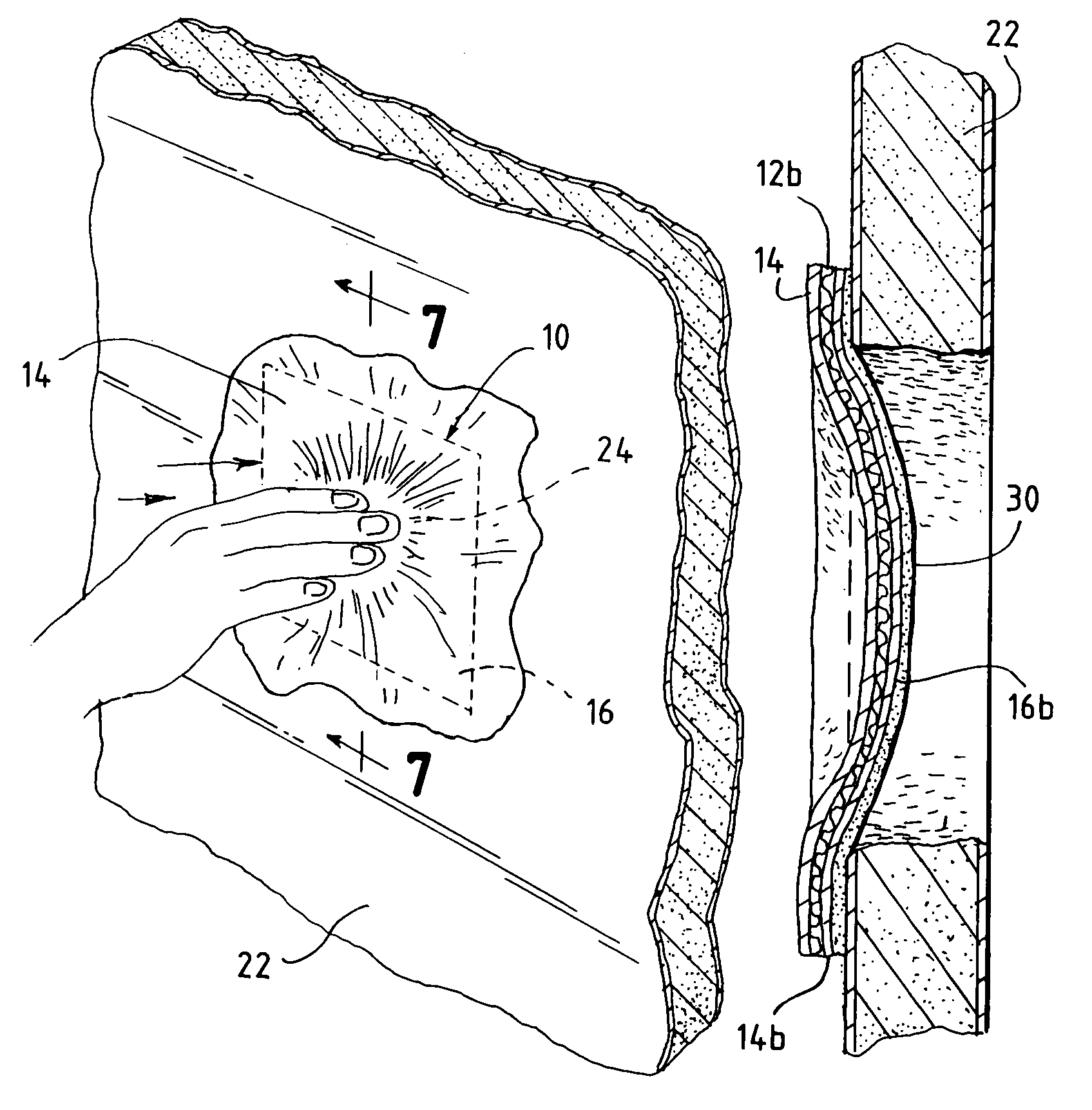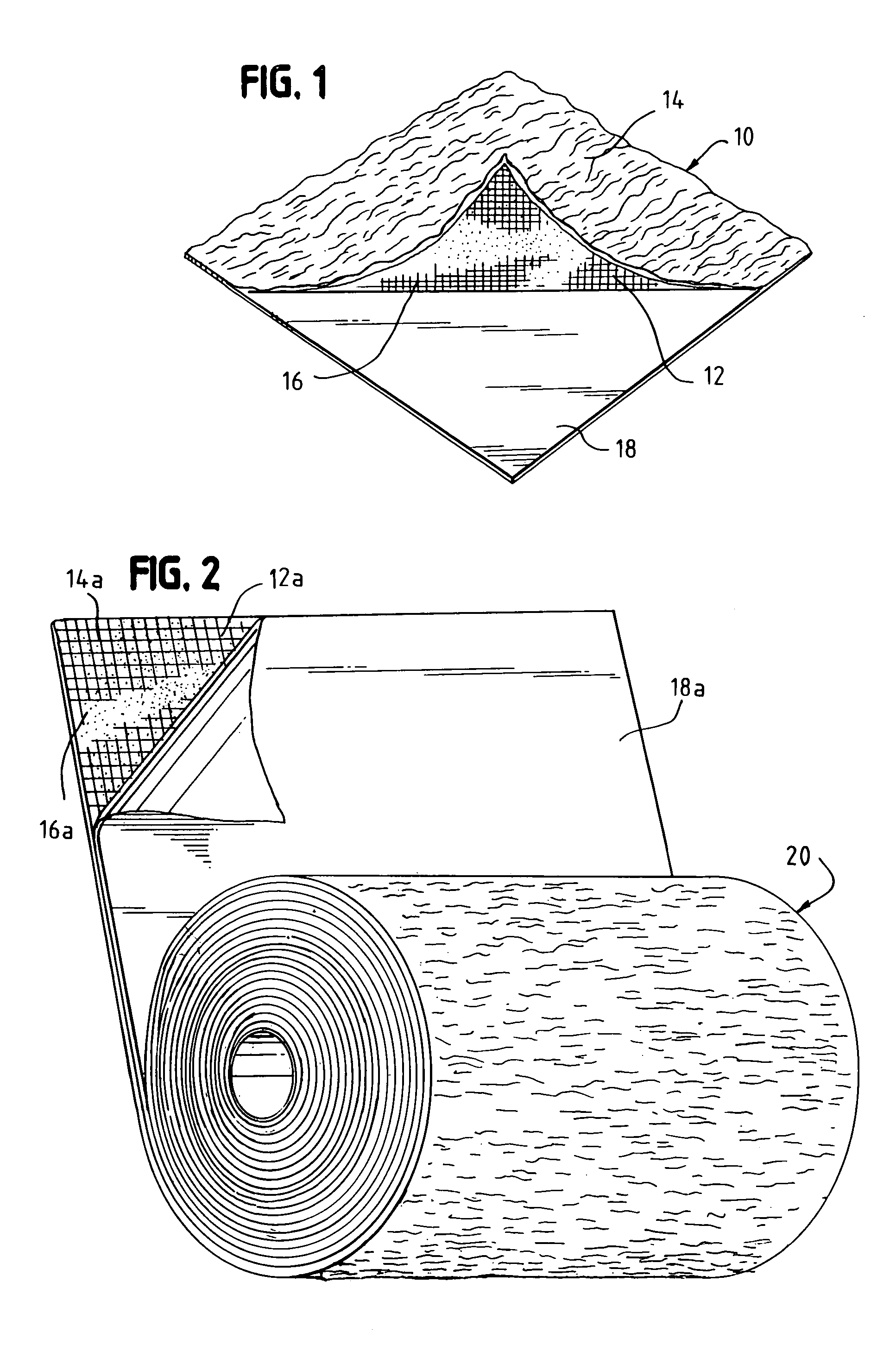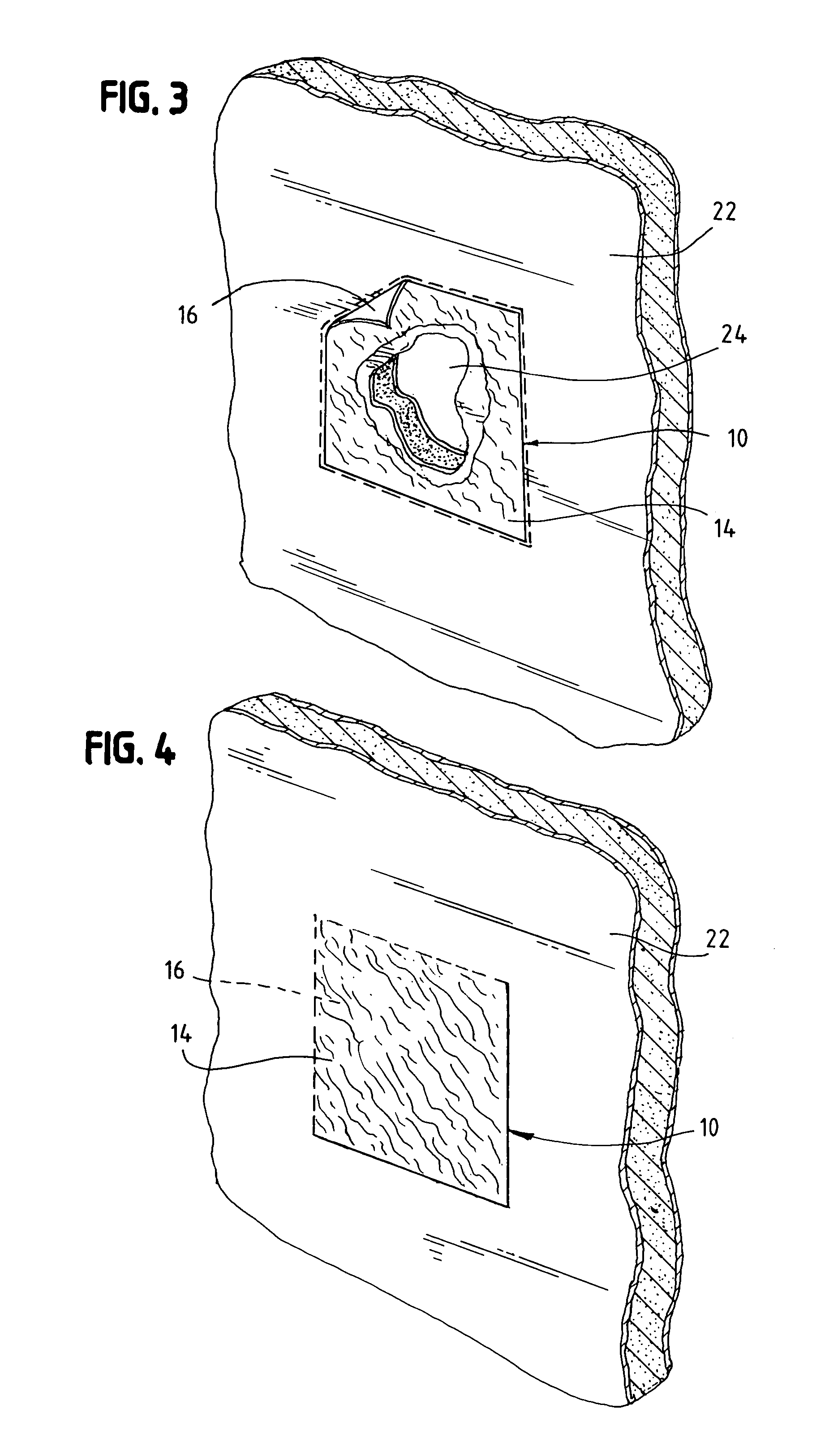Drywall repair patch
a patch and drywall technology, applied in the field of drywall repair patches, can solve the problems of inflexibility, inability to sell in a roll, and no presently available system to efficiently and adequately repair
- Summary
- Abstract
- Description
- Claims
- Application Information
AI Technical Summary
Benefits of technology
Problems solved by technology
Method used
Image
Examples
Embodiment Construction
[0008]In accordance with this invention, a drywall repair patch is provided, which comprises: a mesh sheet which carries a dry, pressure sensitive adhesive layer on one side thereof; and at least one layer of a dry, water hardenable cement product also carried on said mesh sheet, typically on the other side thereof, with the mesh sheet being free of any rigid supporting plate. The repair patch is at least about four inches both in length and width, unlike drywall tape used for taping drywall seams and cracks, which is typically about two inches wide, and cannot be effectively used for patching holes or channels, where substantial drywall material is missing.
[0009]The drywall repair patch of this invention carries both dry, pressure sensitive adhesive, and a water hardenable cement product layer such as a plaster and particularly a quickset plaster, of the type used in plaster bandages for medical cast forming, such as that disclosed in U.S. Pat. No. 3,945,842. The mesh sheet may com...
PUM
| Property | Measurement | Unit |
|---|---|---|
| length | aaaaa | aaaaa |
| width | aaaaa | aaaaa |
| length | aaaaa | aaaaa |
Abstract
Description
Claims
Application Information
 Login to View More
Login to View More - R&D
- Intellectual Property
- Life Sciences
- Materials
- Tech Scout
- Unparalleled Data Quality
- Higher Quality Content
- 60% Fewer Hallucinations
Browse by: Latest US Patents, China's latest patents, Technical Efficacy Thesaurus, Application Domain, Technology Topic, Popular Technical Reports.
© 2025 PatSnap. All rights reserved.Legal|Privacy policy|Modern Slavery Act Transparency Statement|Sitemap|About US| Contact US: help@patsnap.com



